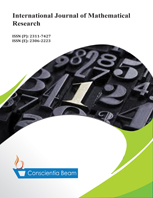The Bounds of Time Lag and Chemotherapeutic Efficacy in the Control of HIV/AIDS
DOI:
https://doi.org/10.18488/journal.24/2014.3.6/24.6.63.81Abstract
The current use of Highly Active Anti-Retroviral Therapy (HAART) strategy to control Human Immunodeficiency Virus (HIV) and Acquired Immune Deficiency Syndrome (AIDS) is inefficient in eradicating HIV/AIDS due to inadequate understanding of the dynamics relating to interaction between the immune system components and HIV. As a result, a pool of potential transmitters is continuously created and thus HIV has remained a pandemic. In this paper, we formulate a mathematical model using differential equations to study the effects of time lag τ>0 due to cellular latency and pharmacological delays and chemotherapy on the control strategy of AIDS epidemic. Equilibrium points of the model are computed and used to determine the reproductive ratio〖 R〗_0. This important threshold parameter is then used to determine the critical bounds of time lag τ∈[τ_min,τ_min] and therapeutic window C_p∈[MEC,MTC] that is, the bounds; above Minimum Effect Concentration (MEC) and below Minimum Toxic Concentration (MTC), where drug plasma concentration C_p should lie for effective maintenance of low levels of viral load and reduction of drug toxicity. The mathematical model gives qualitative understanding of HIV prognostic information which is a means of rejuvenating the existing Antiretroviral drugs (ARV’s). Numerical simulations show that a stable and persistent endemic equilibrium state of low viral load is achieved when these thresholds τ∈[0,25] and C_p∈[0.79,0.91] are satisfied. This persistent equilibrium state will lead to eventual eradication of HIV/AIDS.

